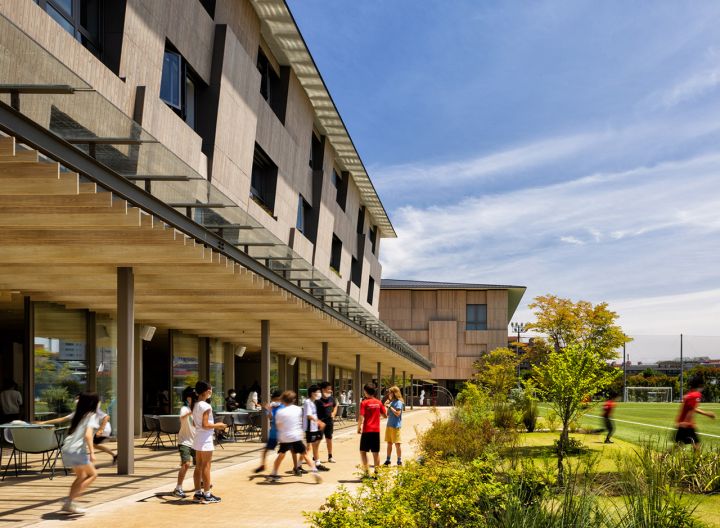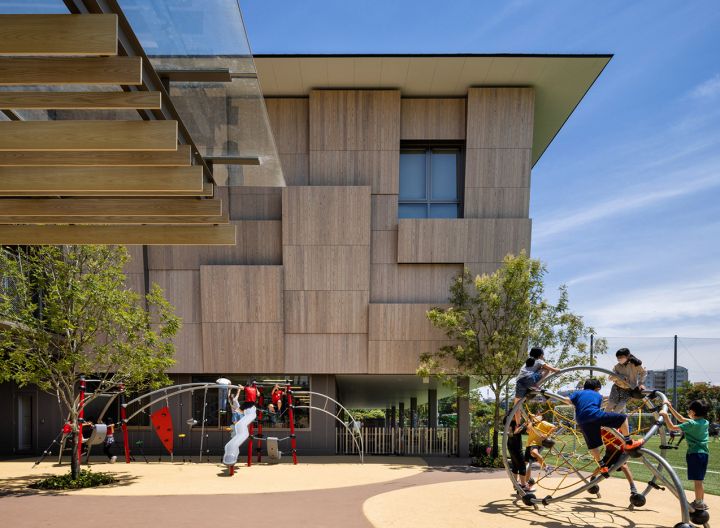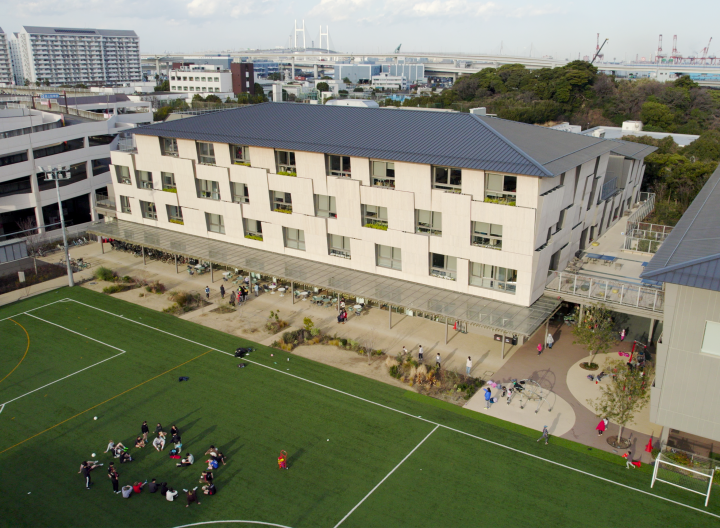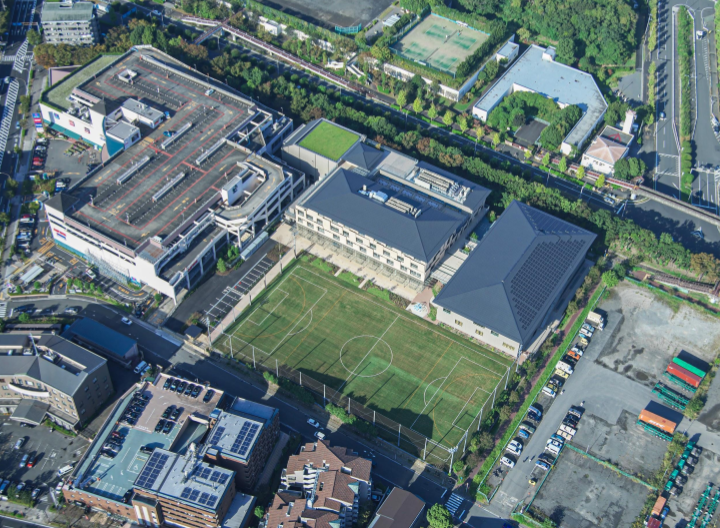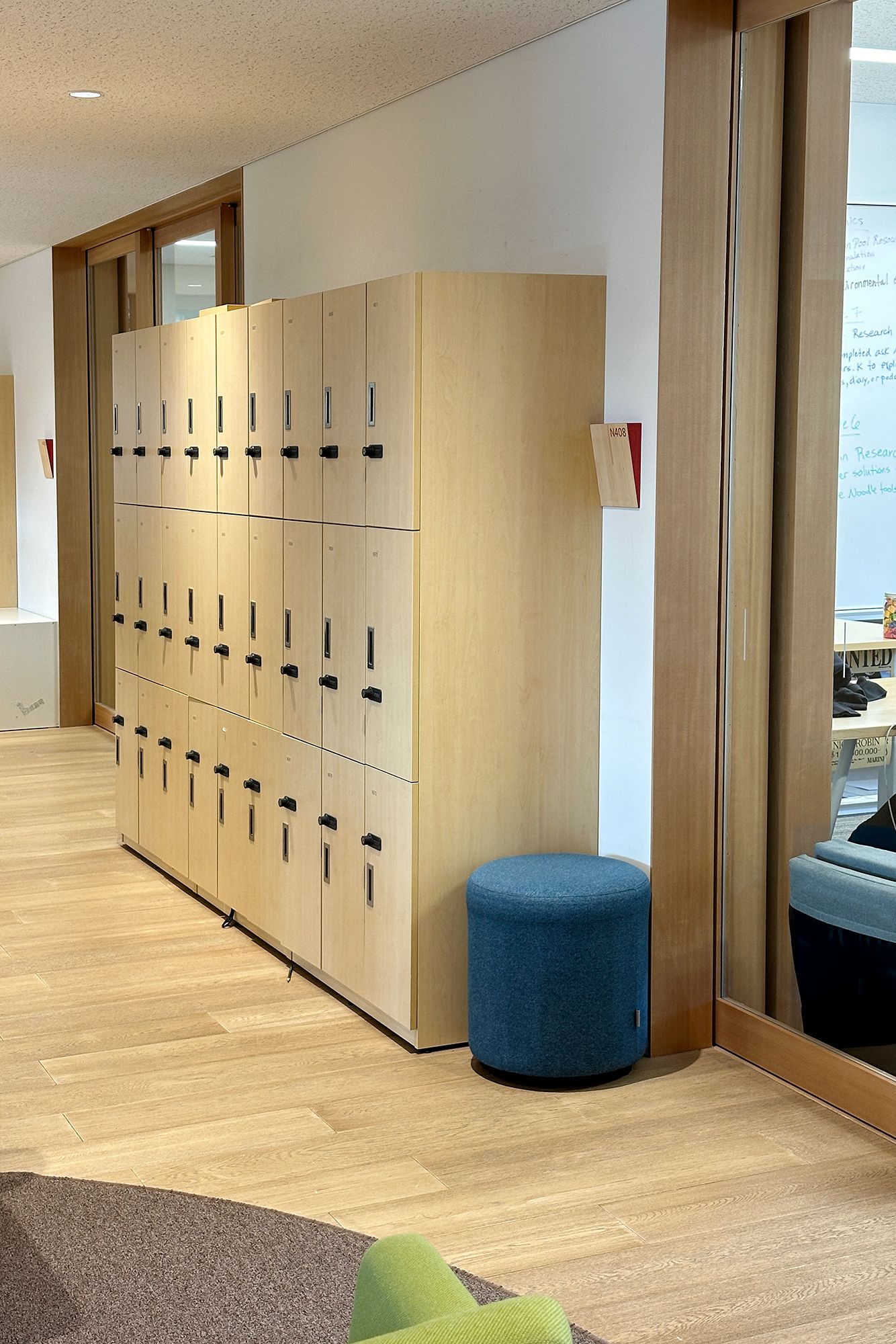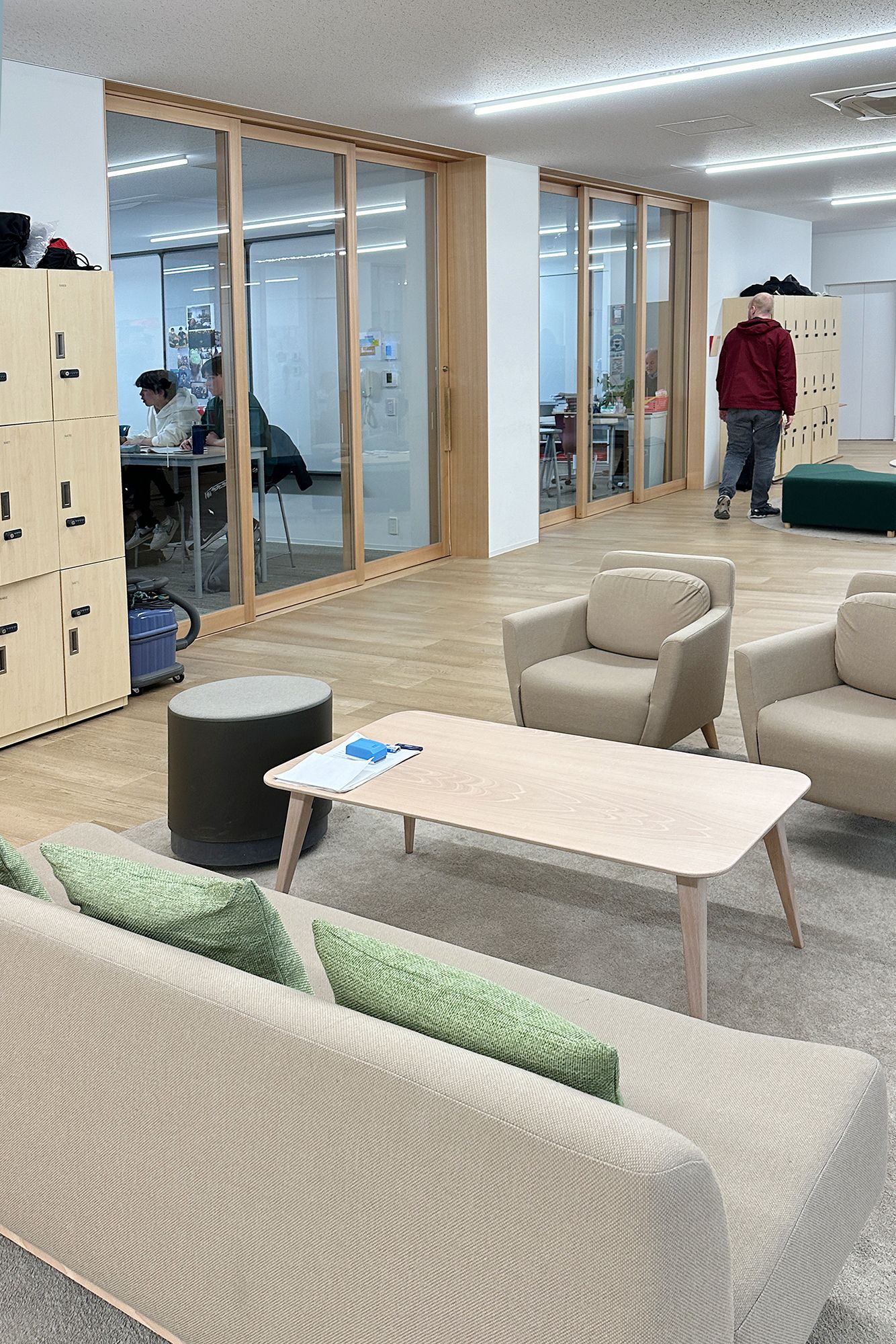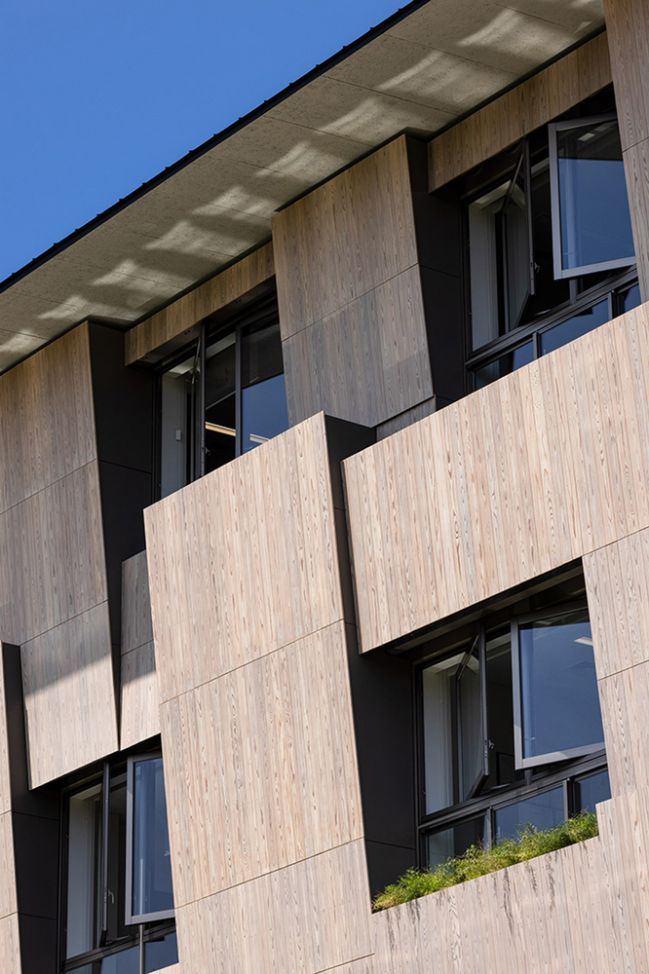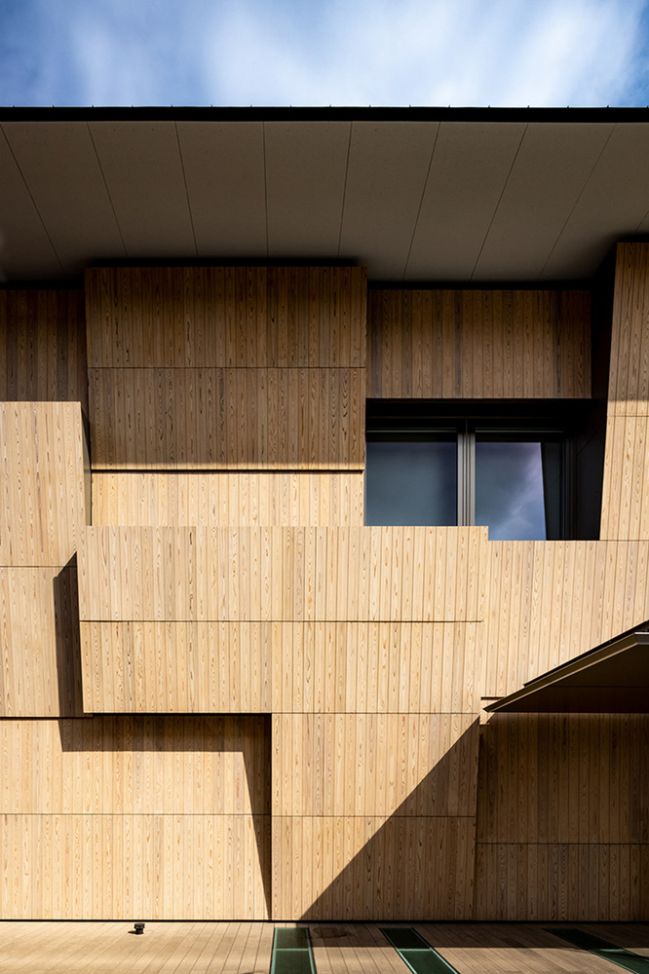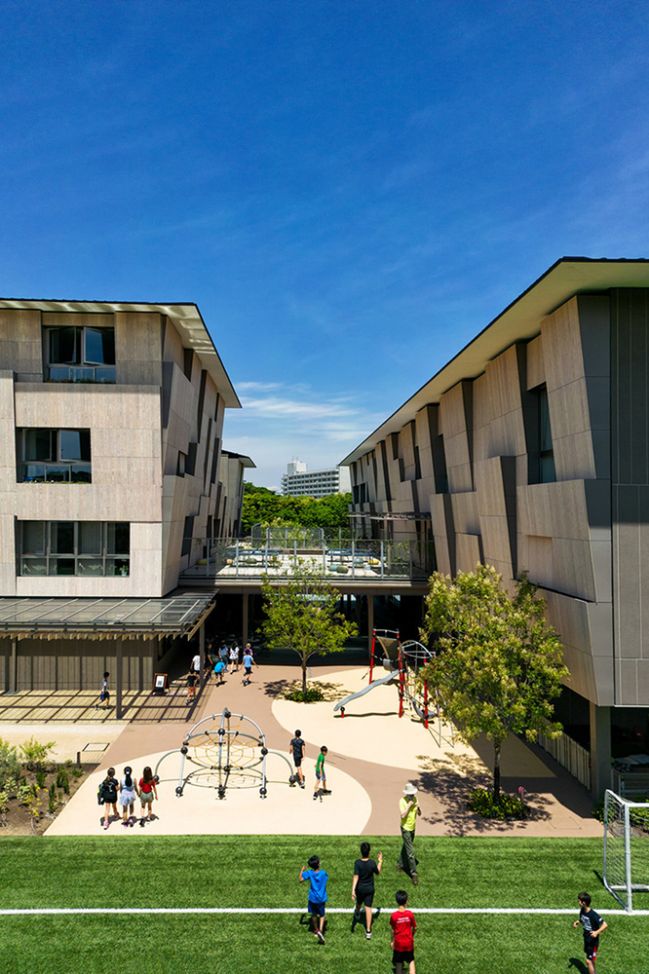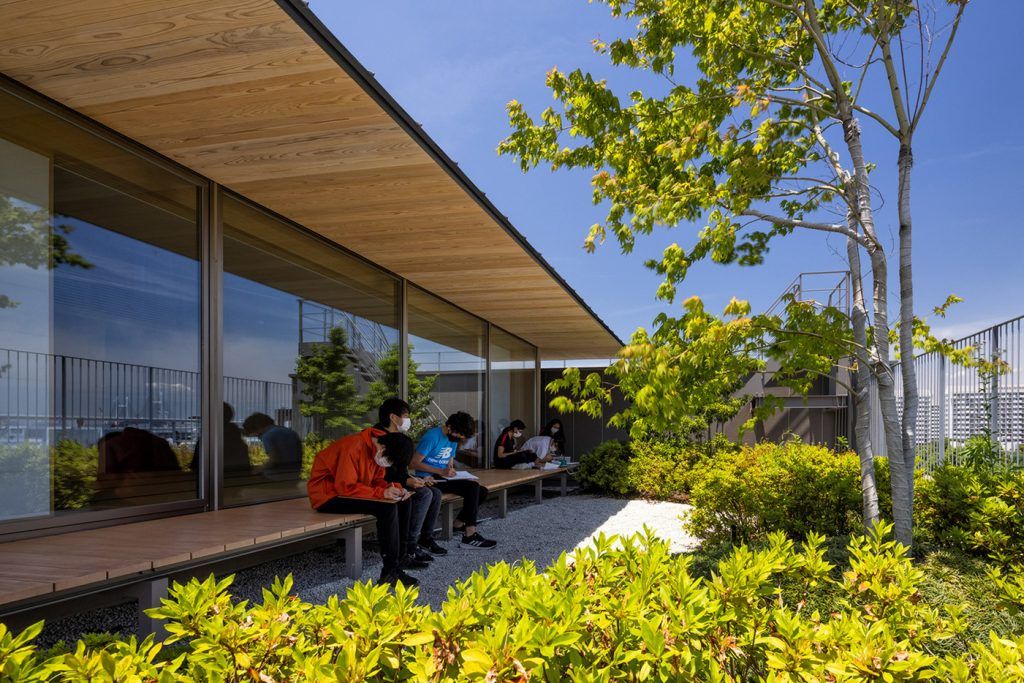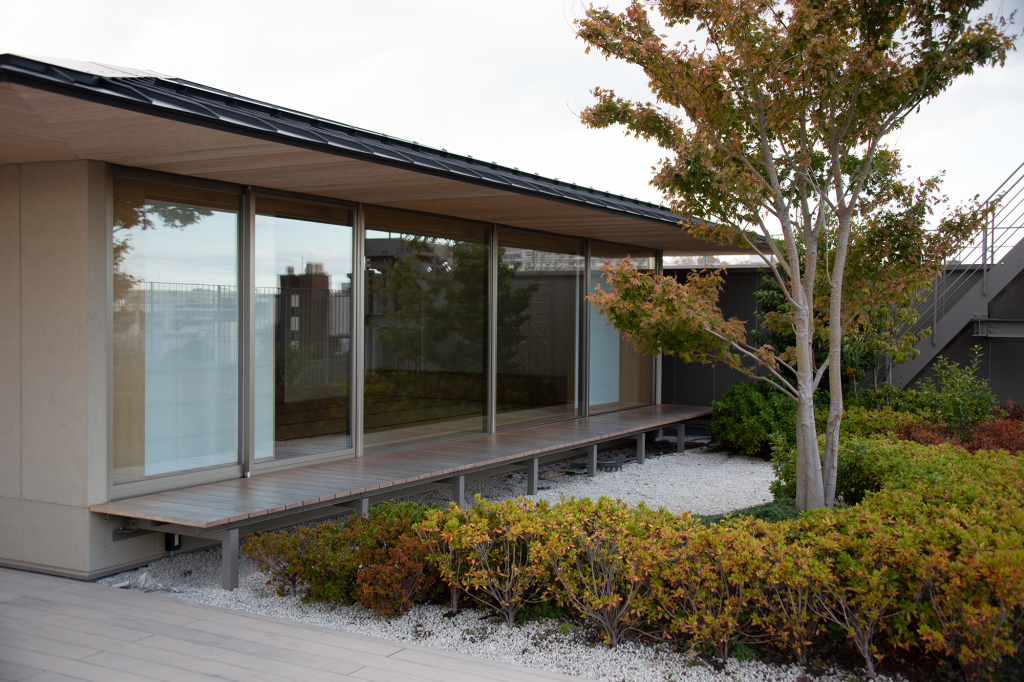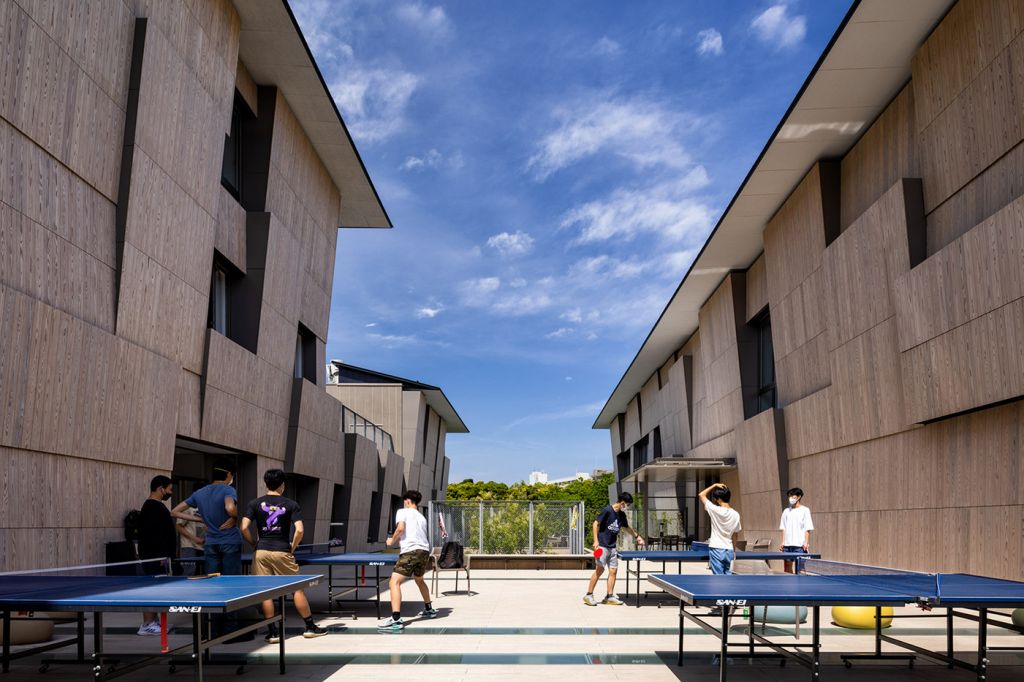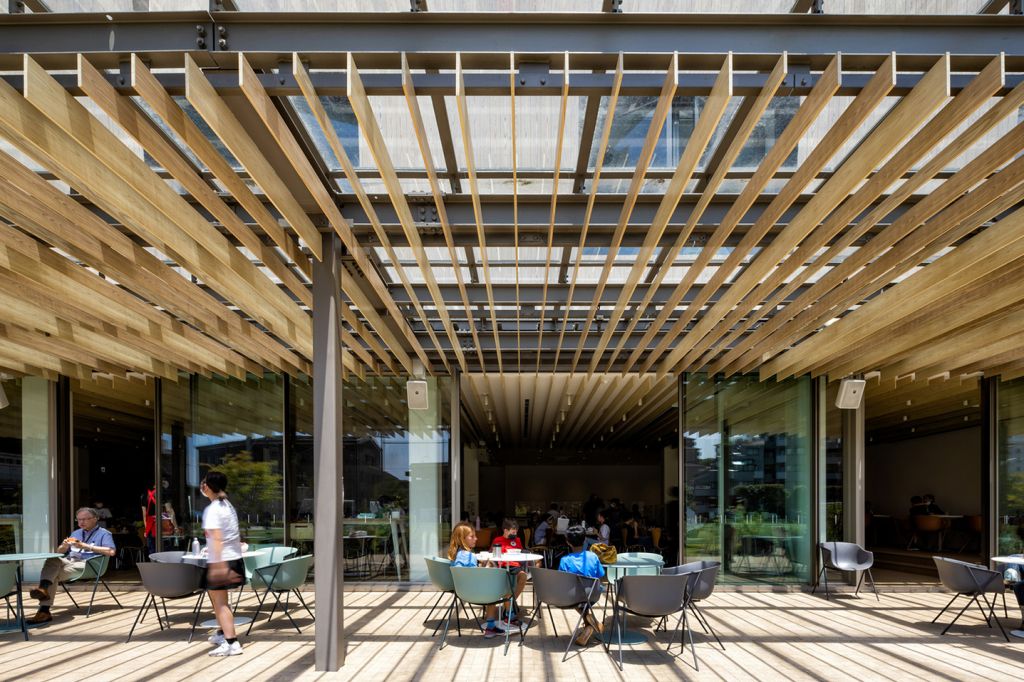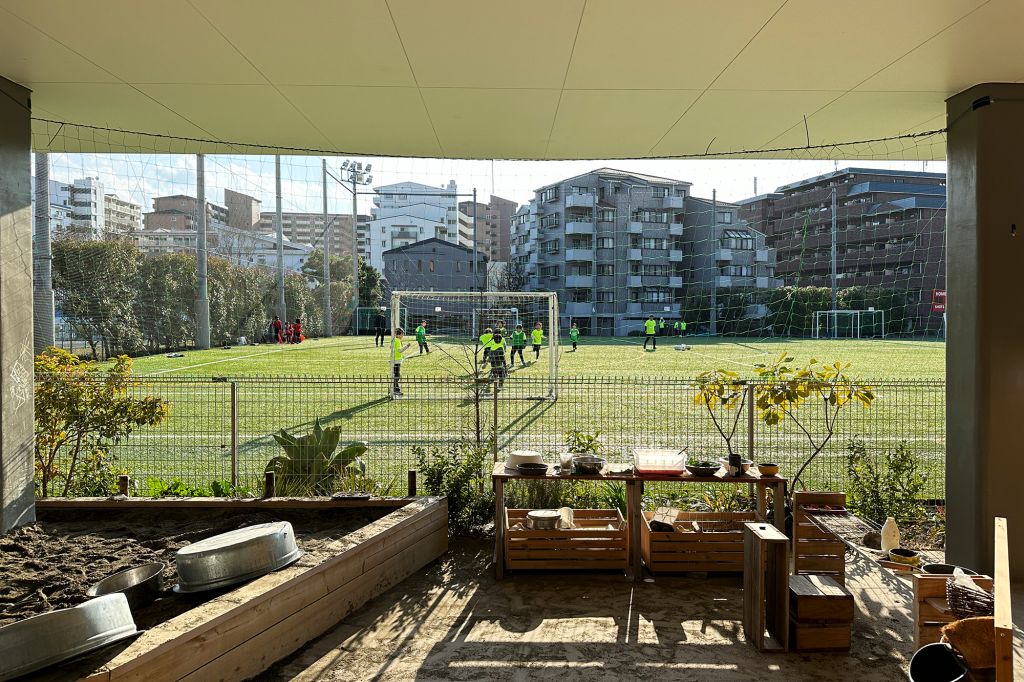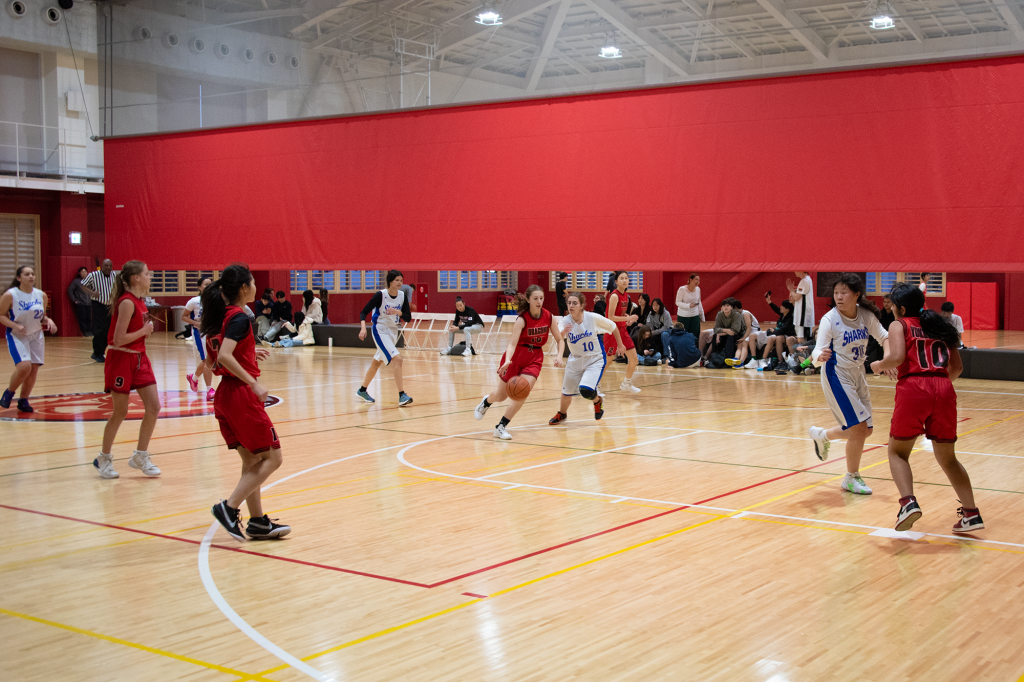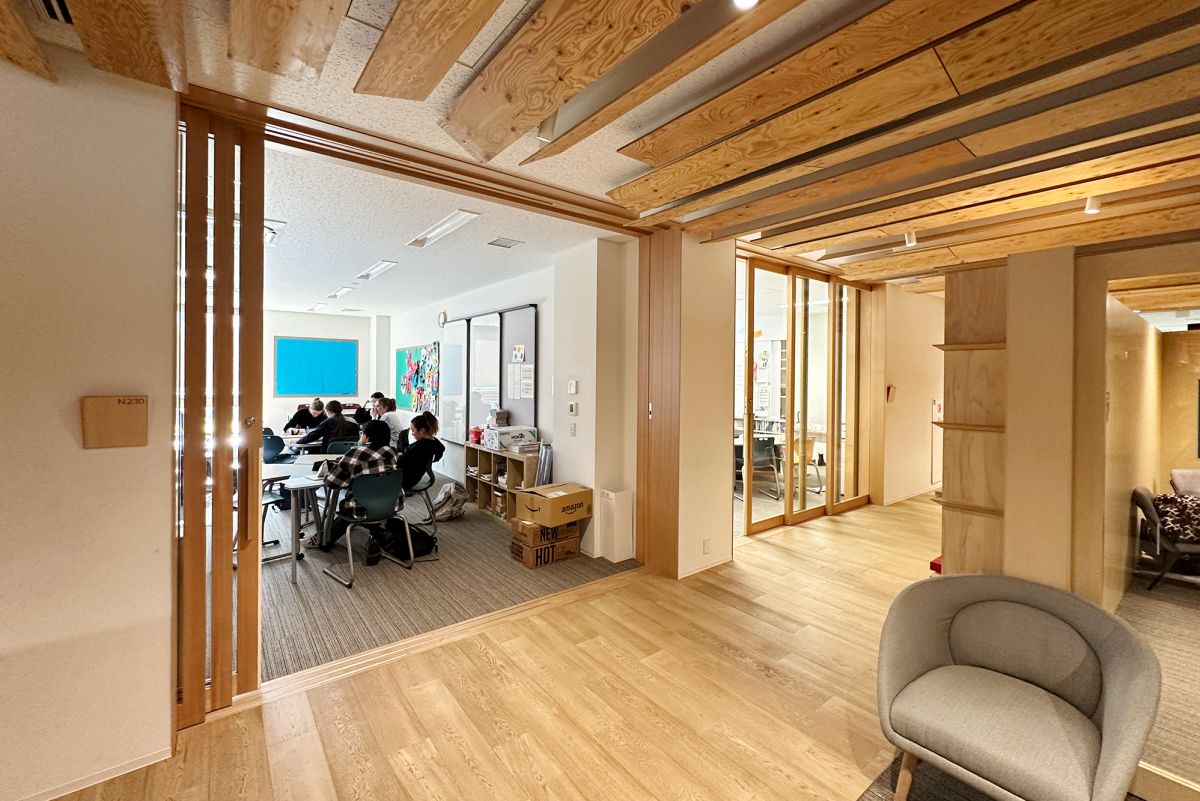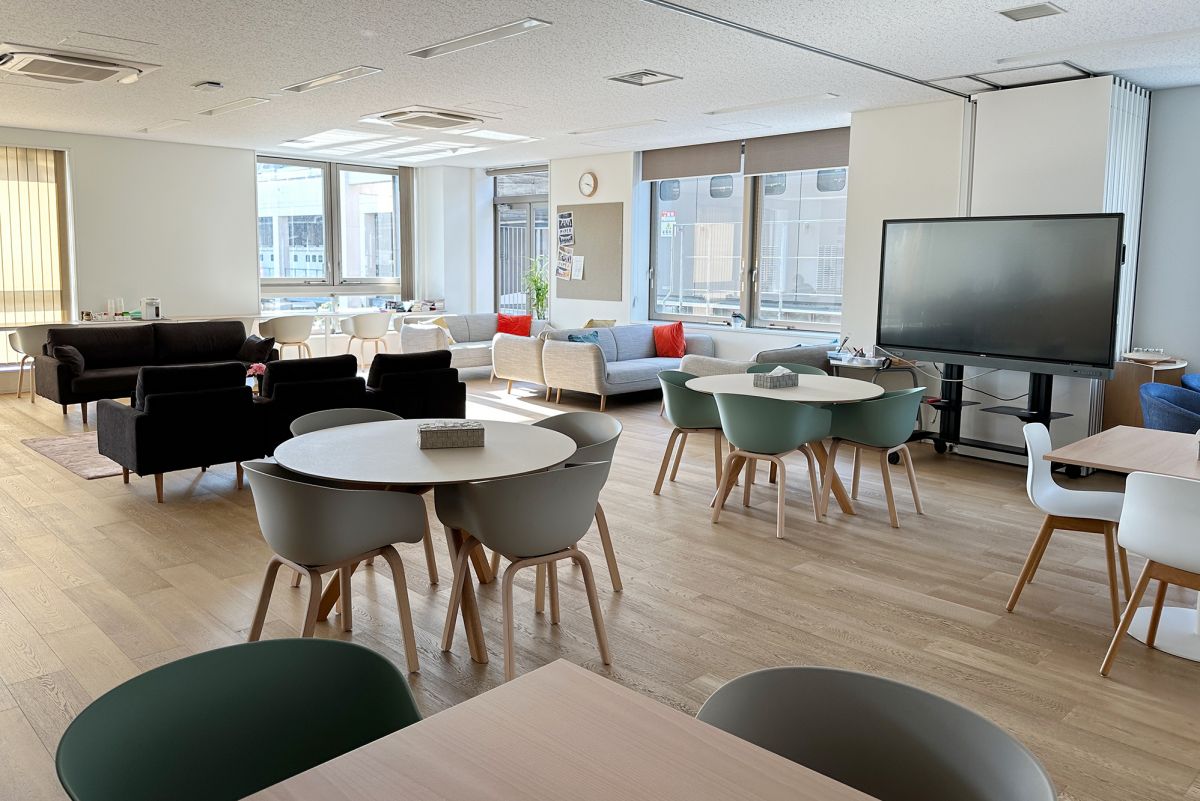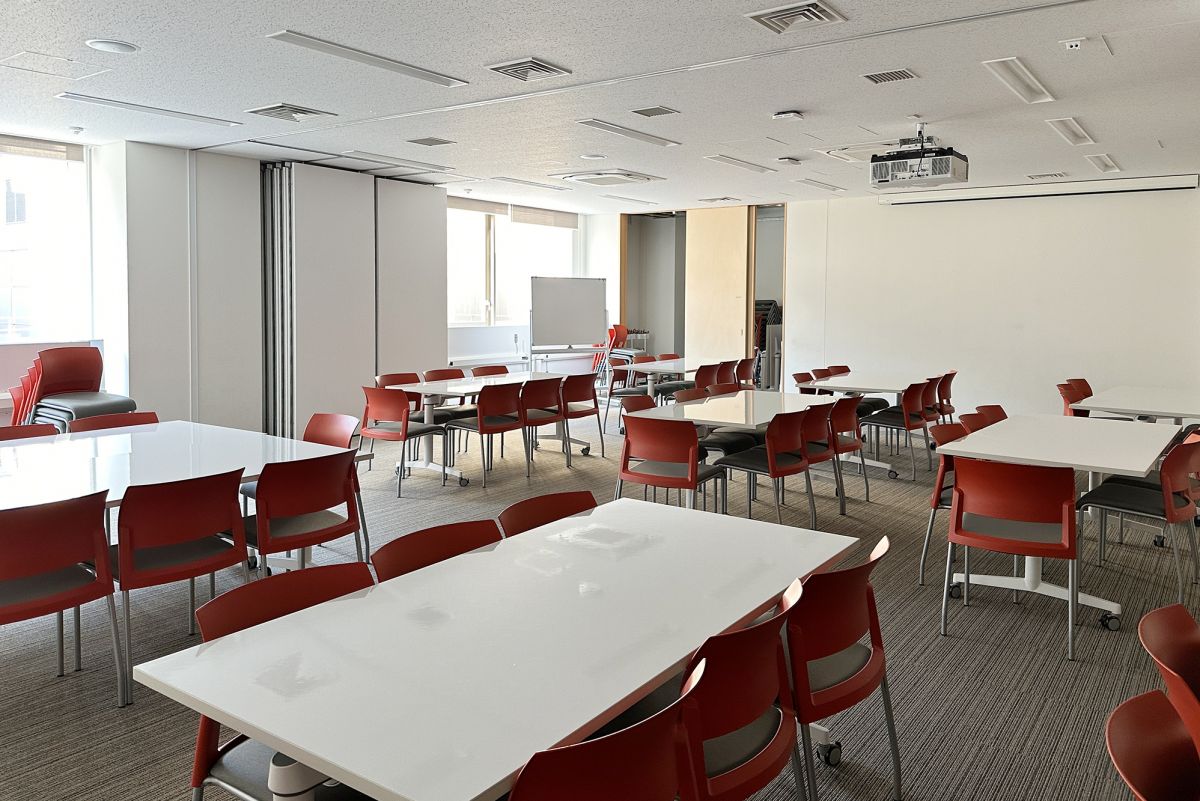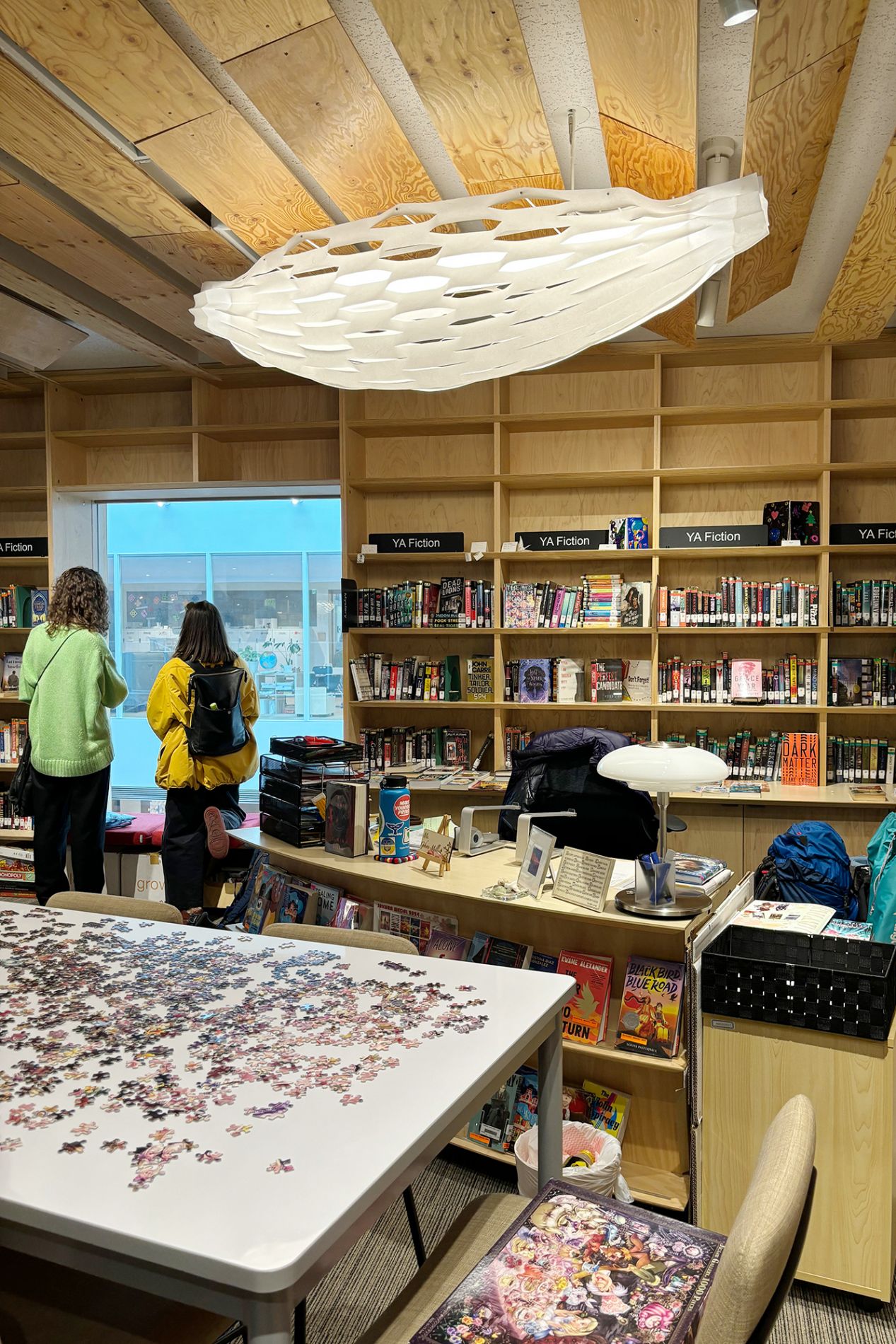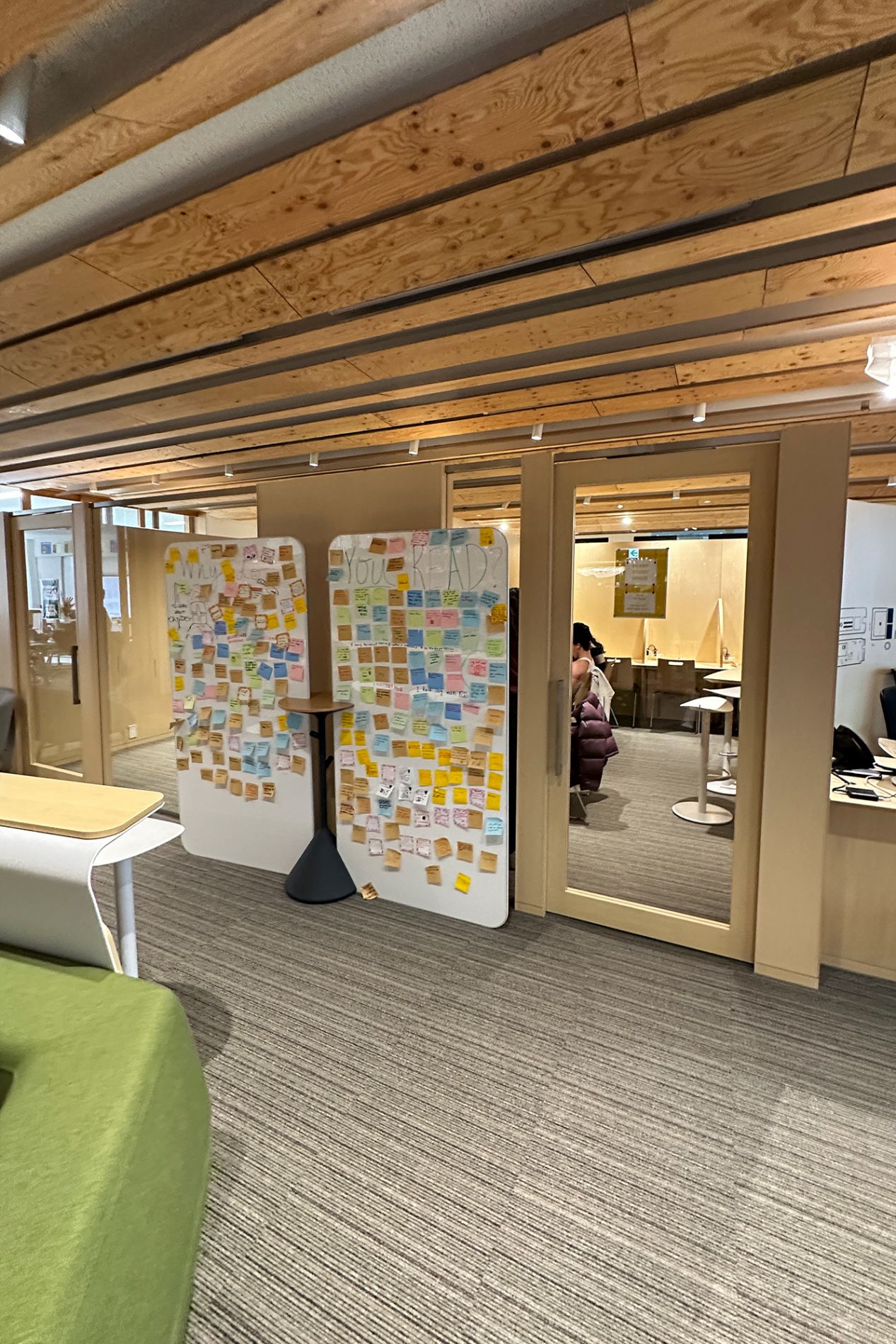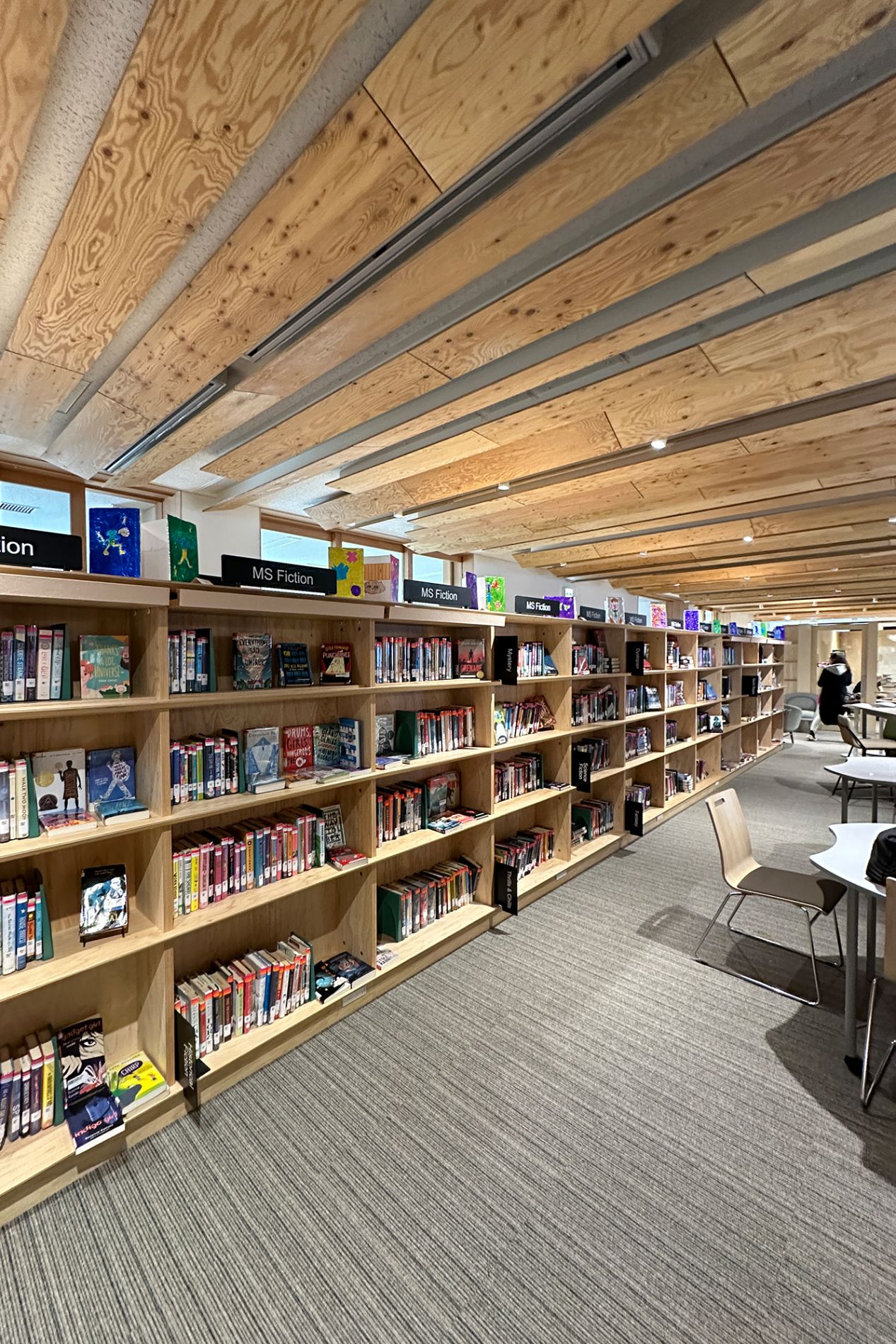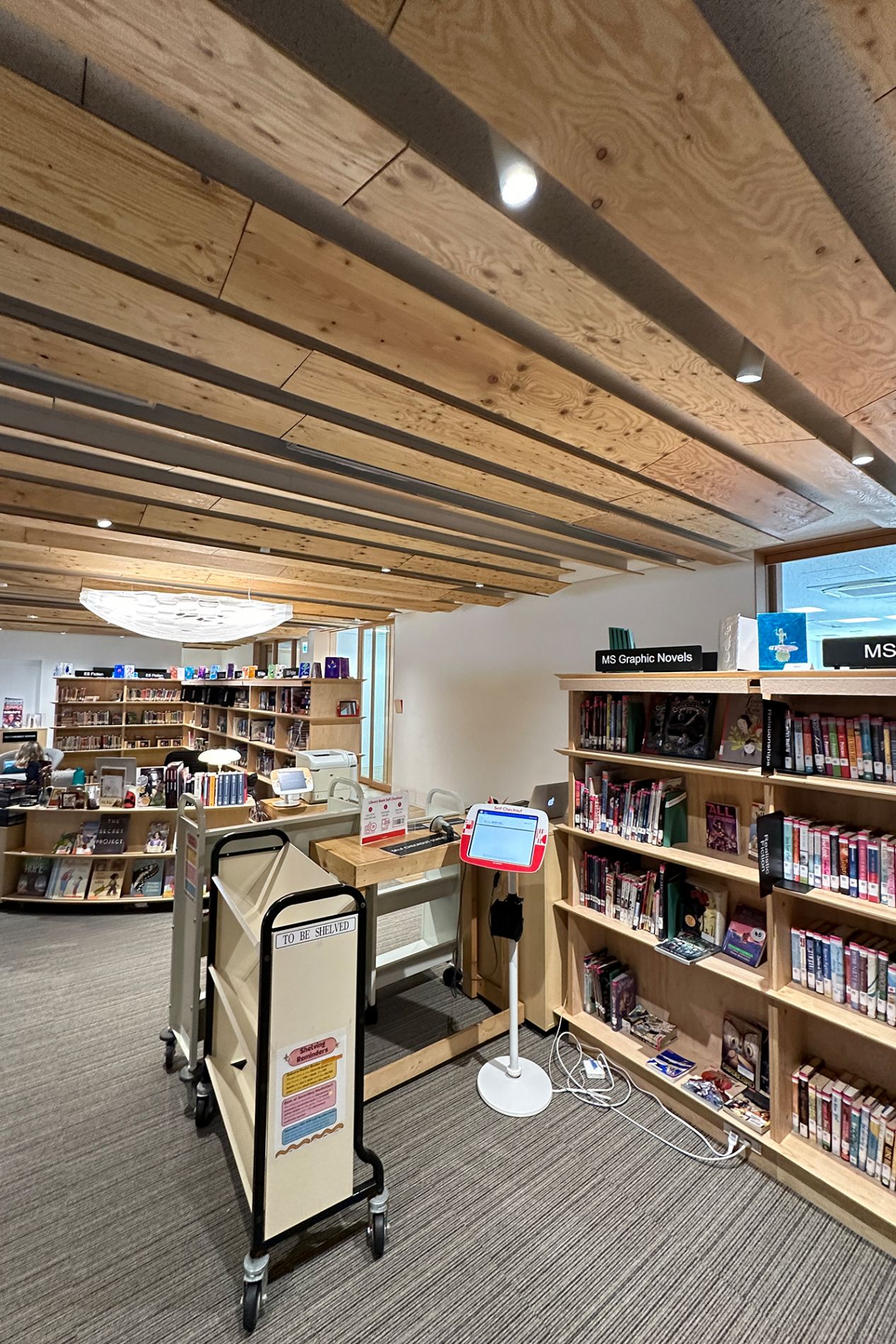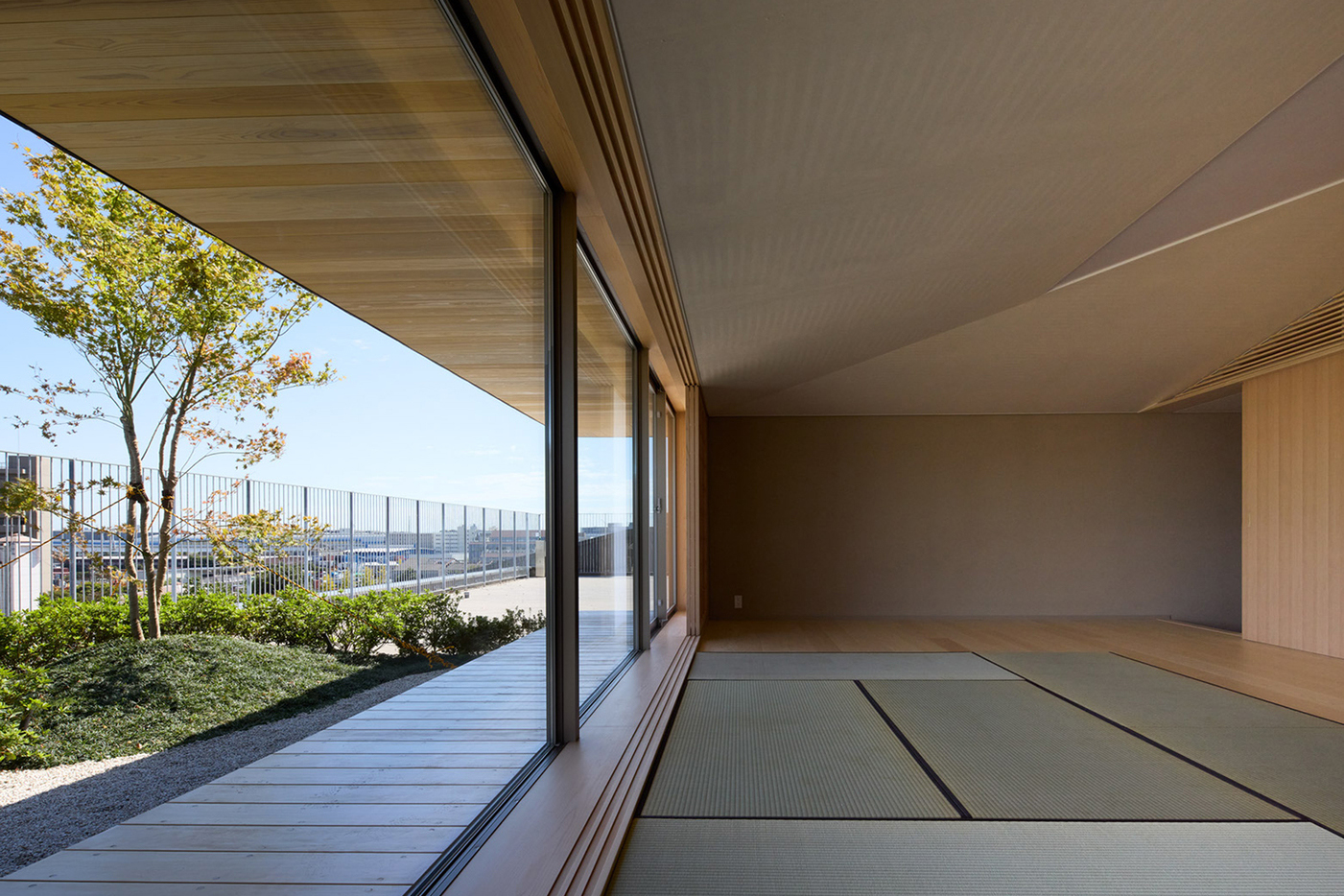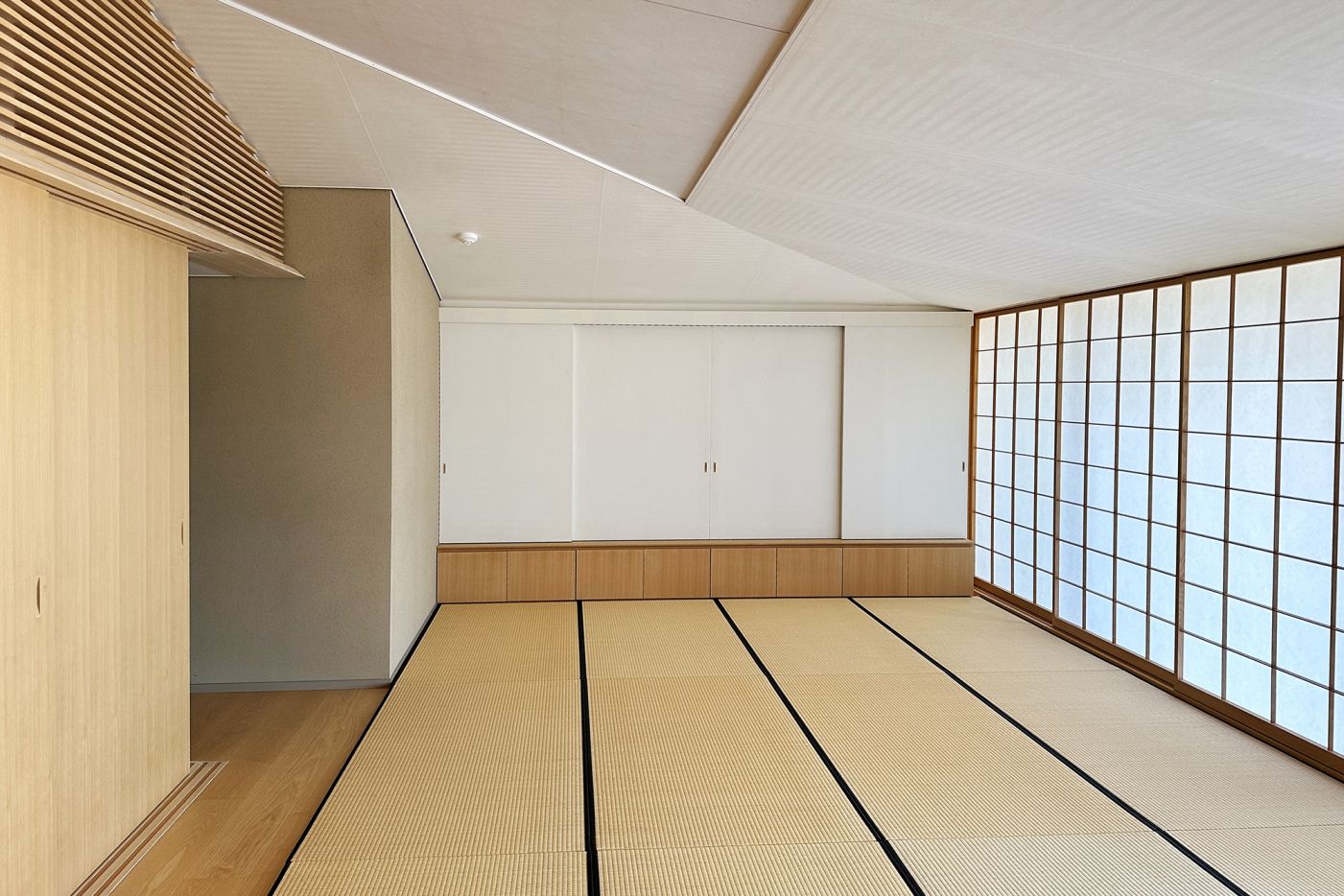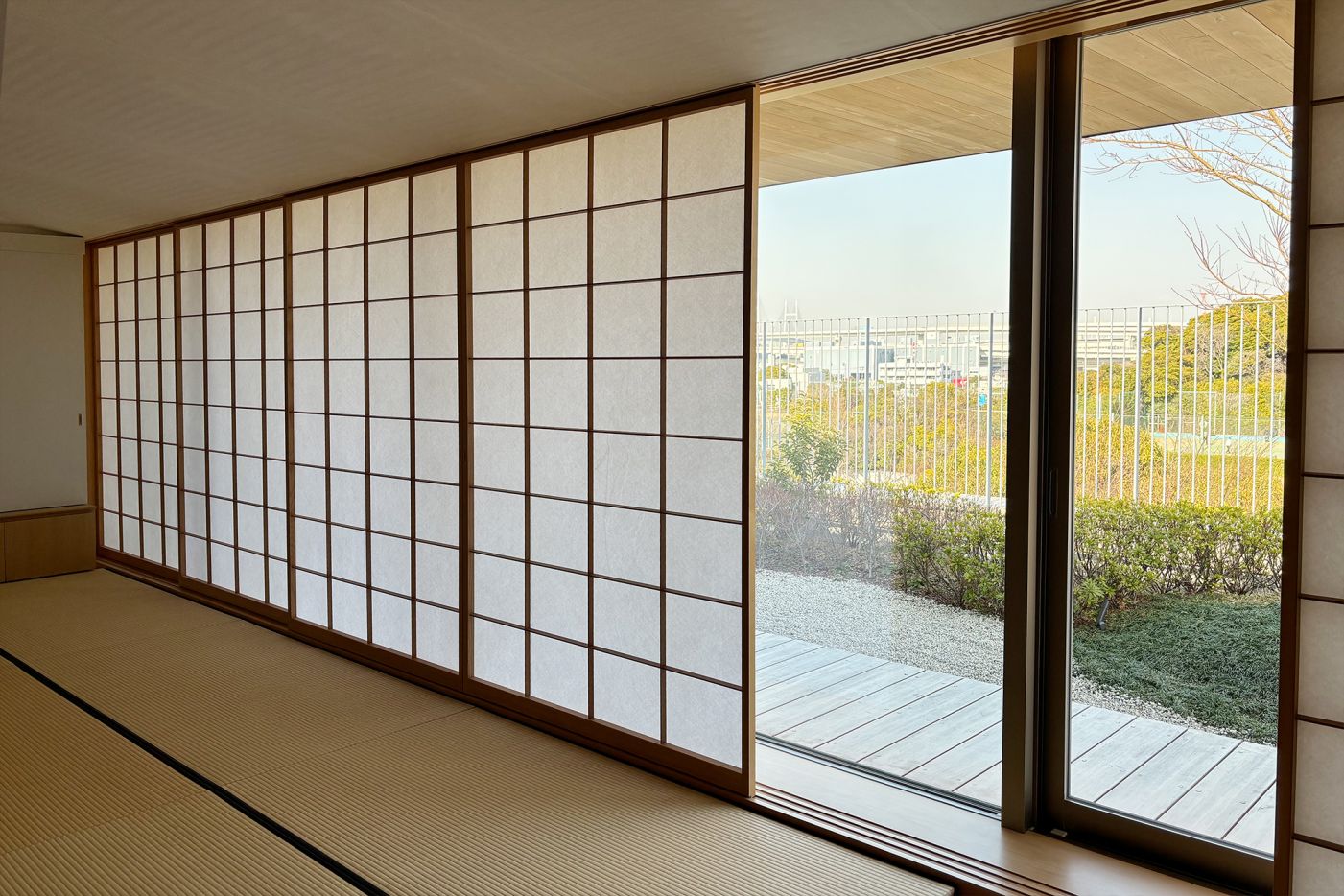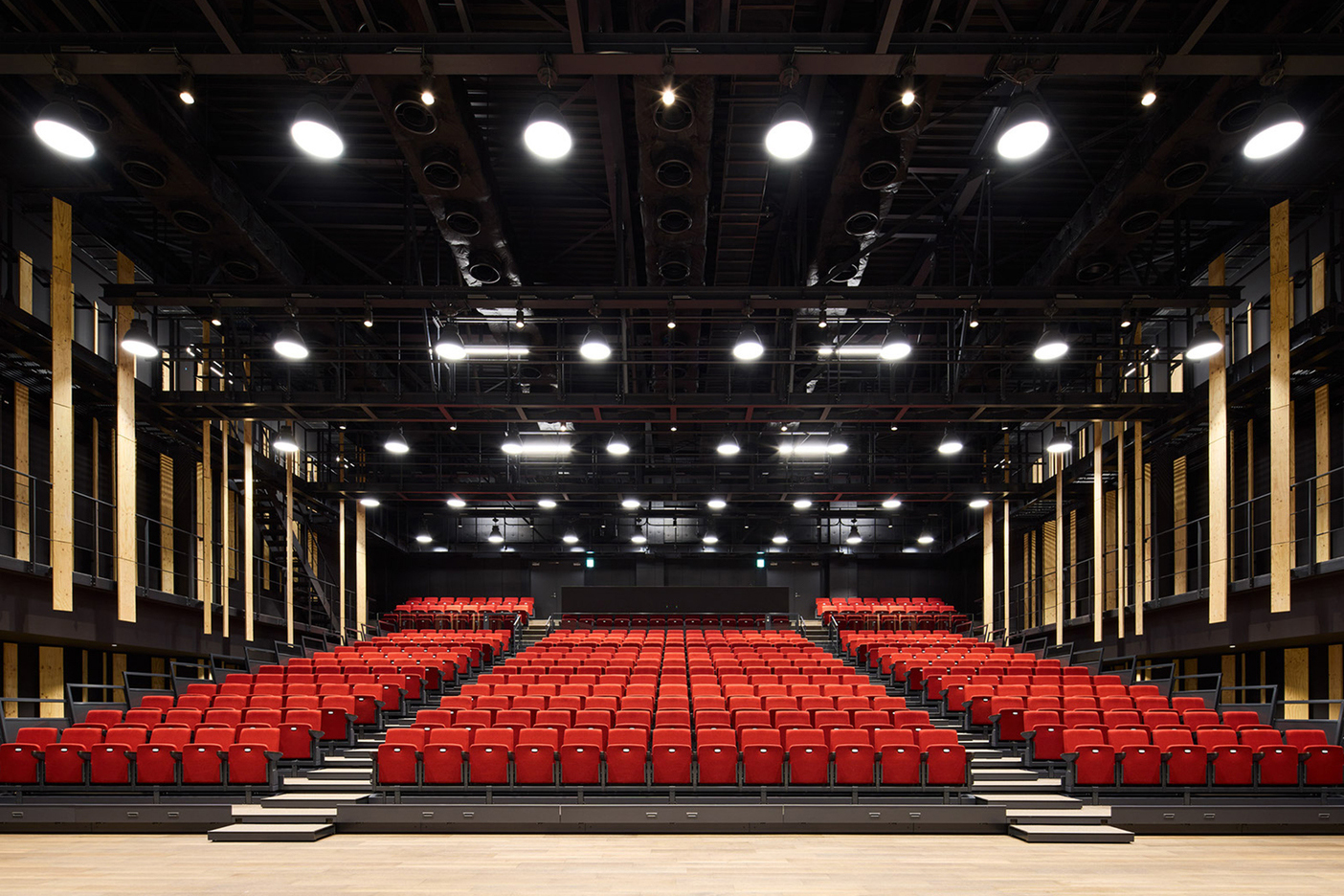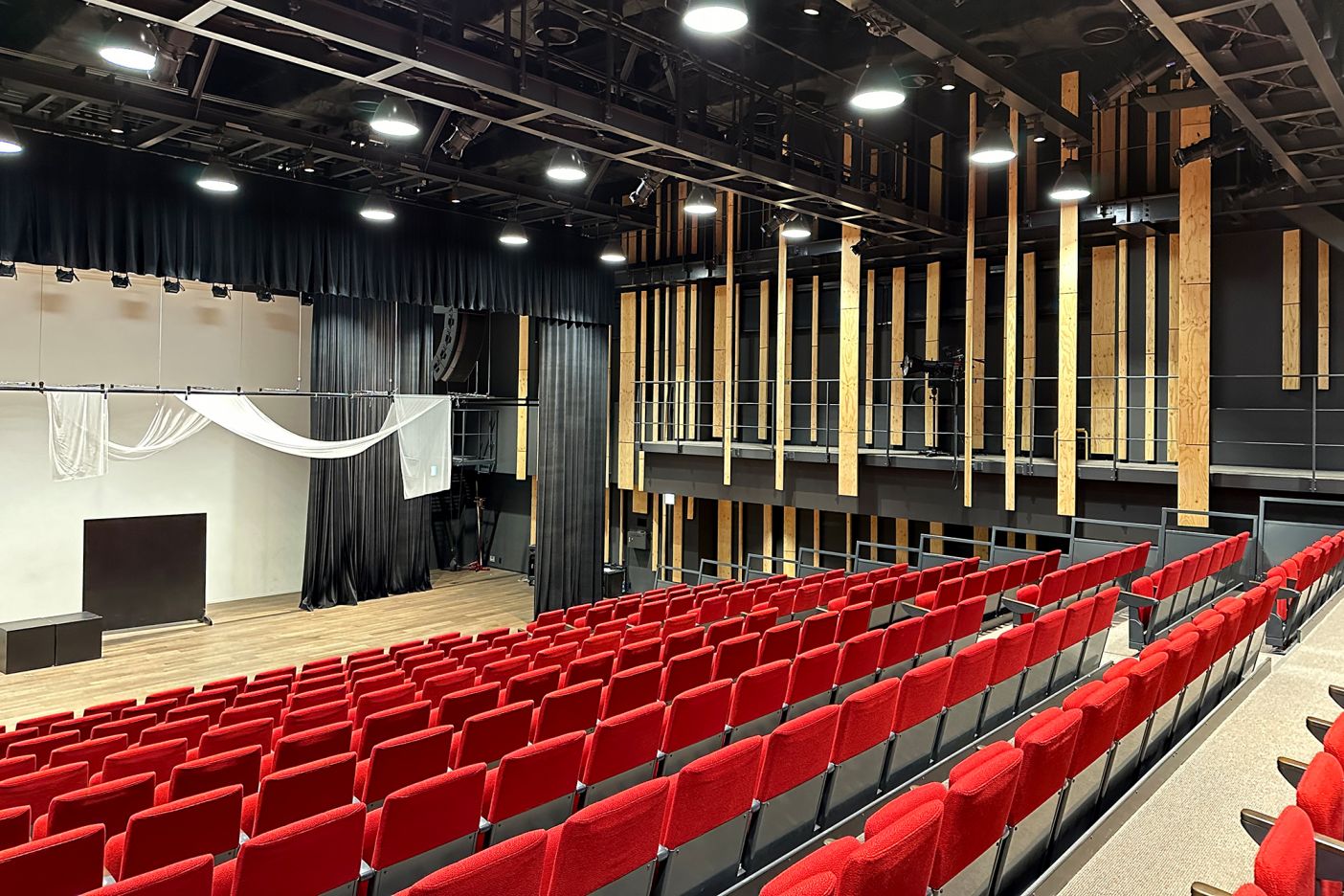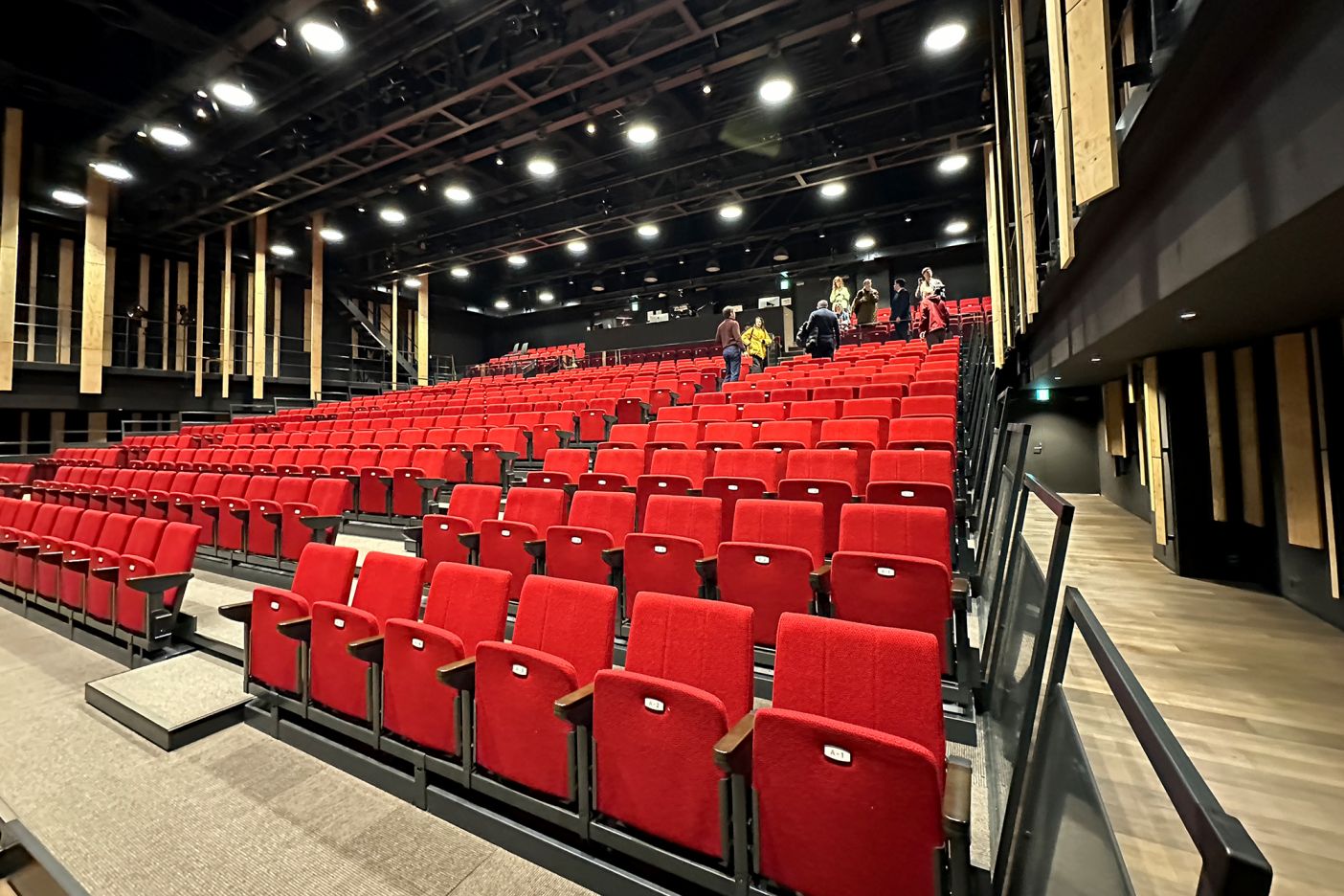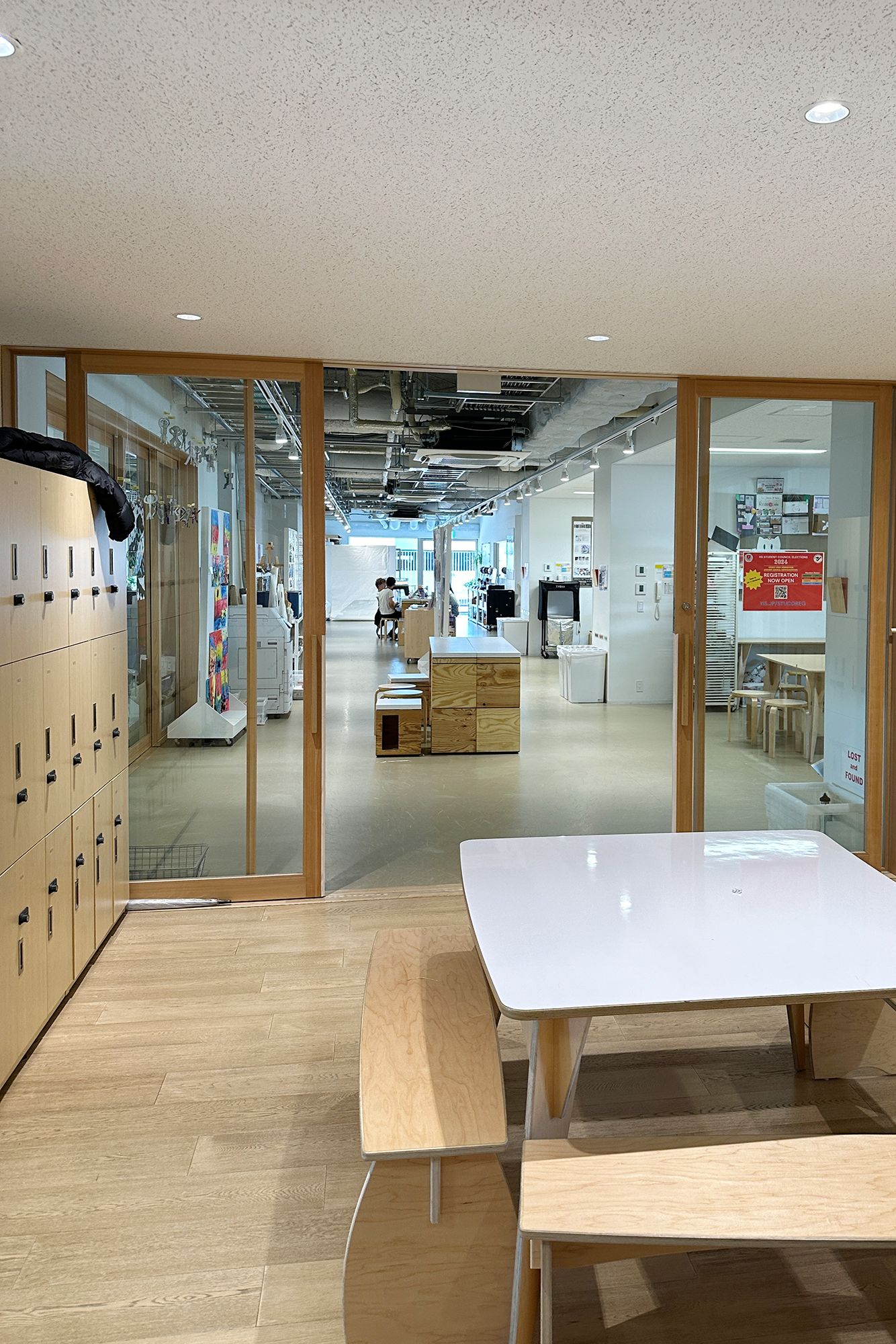On our educational institution tour in Japan, we visited the new campus of Yokohama International School. School director Craig Coutts led us on a tour, during which he explained how they managed to engage a renowned architect in designing the school and what compromises had to be made to create a comfortable educational environment that includes space for meditation, tea ceremonies, and making mochi.
The Old School in a New Place
Yokohama International School was founded in 1924, but it was closed during World War II. In 1955, the school reopened. However, its buildings, gymnasium, and other facilities were scattered around the historic district of Yamate, and it got to the point where Yokohama International School was unable to accommodate more students and meet their learning needs within the old style facilities. To construct a new campus that would provide students with comfortable conditions, the Board of Directors purchased land in the neighboring district of Honmuku in Yokohama.
“We managed to acquire a small plot of land,” says YIS director Craig Coutts, “but this is a common situation in Japan, as there are generally land issues in the country. However, this plot is still twice as large as what we had before. So, we were able to build a comfortable campus that accommodates 200 more people than the old building did. In January 2022, we moved to the new campus, and now we have 820 students enrolled.”
Not all YIS students live in this area, and some even come to Yokohama from the greater Tokyo area. They are met by a school bus at the station.
Photo: Masaki Hamada, YIS
Designing with the Star
The new campus of Yokohama International School was designed by the renowned Japanese architect Kengo Kuma.
![]()
The idea of the school leadership was to create a place that was completely tailored to educational tasks: every space should be a learning space.
In the old school campus, the space was traditional: corridors and classroom boxes. In the new campus, they tried to make the rooms as open as possible. They also decided to replace traditional furniture: in the new classrooms, there are high and low tables, sofas, cushions — all necessary for each student to find a comfortable place to study.
"But new furniture alone is not enough to motivate students," Craig Coutts is convinced. "We wanted them to feel at home in the school, to create a home-like atmosphere here. That's why we have carpets, small tables, and poufs — everything to create a sense of a real home."
Photo: Dmitry Shilyaev
The school furniture was ordered from suppliers from around the world: from New Zealand, Australia, Canada, America, Korea, and, of course, Japan — but only after approval by the architect.
"You know, Kengo Kuma is very, very meticulous, and his attention to detail is simply incredible. We even discussed the color of fire hydrants and the like."
From the beginning of the design to the opening of the school, almost 4 years passed. School representatives actively participated in all processes: together with architects and builders, they reimagined the space of the old building to understand how to improve the learning process through the environment — what needs to be changed, what needs to be abandoned.
![]()
Craig Coutts was very impressed with the project by Kengo Kuma's architectural firm, but now he admits that he would make one change: "The locker rooms. They turned out to be very small. We simply didn't have enough space for everything, so we had to rearrange the configuration of the locker rooms, and they ended up being cramped."
Wood and Other Japanese Philosophy
Kuma's style is recognizable: he loves to use wood. The dynamic facade of YIS is made of cedar panels. They are treated with a coating to preserve the integrity of the wood, attached to steel frames on the exterior wall. Underneath the wooden panels is a layer of fire-resistant materials.
Photo: Masaki Hamada
Over time, the wood on the facade will age and acquire a grayish shade. Every 2-3 years, it needs to be washed, and some parts retreated to maintain its original appearance.
The school rooms are also adorned with wood: the walkways and halls have wooden floors, in the library there are wooden ceiling blinds, while other rooms have wooden panels. Even the stairs in the school are made of wood.
Another feature that Kuma introduced into his creation is related to Japanese philosophy: the integration of the artificial environment with the world of nature. The campus has several green areas and a garden located on the roof.
Photo: Masaki Hamada, YIS
Campus Layout
Yokohama International School consists of the Early Learning Center, kindergarten/elementary school, middle school, and high school. The education is designed for a total of 13 academic years.
The campus area is 14,865 square meters, and it contains two main buildings. The 4-story North building houses the library, most classrooms and theatre, faculty and administration offices, and a cafeteria for 230 people. The 3-story South building houses the Early Learning Center and a sports complex with a gym and indoor pool.
Photo: Masaki Hamada, YIS, Dmitry Shilyaev
Open Space
In every traditional Japanese home, there is open space. Kengo Kuma transferred this feature to the campus: for example, classrooms and sports facilities are connected by open courtyards.
Common areas—hallways and recreational areas—are designed as spacious "open hubs" that can accommodate several classes. These spaces can be used for various learning scenarios, and students can use them for their needs.
Photo: Dmitry Shilyaev
There are eight collaborative workspaces in the school, which can be reserved through any device: to do this, you need to make an appointment in the shared Google Calendar. This can be done not only through the iPad outside the room but also through your phone or computer—students and teachers have access to the Google Calendar.
"These spaces are constantly in use: someone holds meetings, yoga and meditation sessions take place here, and events related to Japanese culture are often held," the school director explains. "That's why a convenient, accessible, open-to-all reservation system was really necessary."
Photo: Dmitry Shilyaev
Atrium and Libraries
The center of the North building features a large, bright atrium. School events, lectures, and presentations take place here, it is also an extension of the classroom. During breaks, this space transforms into a play area.
Photo: Dmitry Shilyaev
Bookshelves are built into the atrium staircase, rising two floors up. The school strives to instill a love of books in students. Library nooks are scattered throughout the school: students can take any books and register them independently in the system.
The school library has over 20,000 books: some are part of the curriculum, while others, as the principal says, are "for pleasure."
Photo: Dmitry Shilyaev
Classrooms and Equipment
Kengo Kuma added to the school project the traditional Japanese system of sliding doors: if you open such doors in a classroom, you get a completely open space. Craig Coutts is confident that this solution has increased students' engagement in learning.
All classrooms in the school are equipped with televisions with touch screens: they are cheaper than projectors and easier to use — there is no need to adjust the lighting for a bright picture. Teachers or students can display images on it from their computers, and it can also be used as a regular whiteboard.
Photo: Dmitry Shilyaev
In some classrooms, there are special tables instead of regular desks, where students can write.
"We noticed that this is a very effective solution, especially in math classes," the school director explains. "Children can write on the table — and this eliminates their fears: any mistake on the table is easy to correct. Yes, such furniture costs twice as much as regular wooden desks, but we believe it's worth it. We constantly use these tables."
The Most Japanese Room
In YIS, there is a space that struck us as the most Japanese: it's a room designed by Kengo Kuma's wife, Satoko Shinohara. She is not only an architect but also a master of the tea ceremony.
"We often hold tea ceremonies here, so this space is important to us. Usually, the floor here is covered with tatami mats, but if they are not needed, they can be removed. There are special places for storage here—currently, they contain zabuton (special flat cushions for sitting on the floor). This room is also used for yoga classes, meetings, and exhibitions, as well as for relaxation and meditation," the school director explains.
Photo: Masaki Hamada, Dmitry Shilyaev
Elements of Japanese culture are integrated into the International School's curriculum: "We have a special person who deals specifically with this: she comes up with how to do it, what connections with Japanese culture we can establish within our curriculum," the school director says. "And can we involve our community in this process in any way. For example, in 8th-grade social studies classes, students plant rice together with the community. Then, 10th-grade students harvest the crop, and 1st-grade students make mochi out of it."
Ikigai in the School
At educational conferences, we often hear that schools around the world are beginning to implement the philosophy of ikigai. This philosophy helps to find satisfaction, joy, and mindfulness in everyday activities and contributes to longevity. Thanks to ikigai, a person learns to organize their thoughts, notice the beauty of the surrounding world, and rejoice in the little things, achieving harmony and inner peace. In Mexico, there is a whole Colegio Ikigai.
"But in Japan, it doesn't work like that," Craig Coutts wonders. "Here, ikigai is not something additional that, you know, needs to be separately implemented. It's just part of what you do and how you do it—it comes naturally. Because it's not a program or anything like that; it's more of a way of thinking."
Flexible Auditorium
The auditorium in the school is flexible: when necessary, the seats fold up and slide back to maximize space — for meetings or theatrical productions. The space can be transformed in seven minutes. The lighting system is installed so that the students themselves can adjust it.
"In the old building, our auditorium had very rigid wooden seats, and by the middle of the performance, everyone would be uncomfortable," Craig Coutts recalls. "But we wanted to have a great theatrical space. The new chairs are very comfortable, the room is excellent, so we hold all official events here, even exams and graduations."
Photo: Masaki Hamada, Dmitry Shilyaev
Special panels are installed on the walls of the auditorium, which serve not only decorative but also acoustic functions: behind the wooden panels are hidden special blinds, changing the position of which can adjust the acoustics in the room.
Art Block
The art block, where students study art and design, according to the architects' and school management's vision, resembles more of a creative workshop. The concrete ceilings give the space a more industrial look.
Art classes and studios are open spaces where classes for all grades take place: "This space has no walls or partitions," explains Craig Coutts. "When kids come here, they understand that they can see each other, consult, learn from each other. Students from different classes can work here simultaneously, and this brings them closer together."
The layout of the art block is designed so that it can be transformed into an exhibition space.
Photo: Dmitry Shilyaev
"Of course, having a modern, beautiful school building is a big plus. Good facilities and a comfortable environment matter, and we understand that perhaps some parents choose our school because they liked the building," says YIS director Craig Coutts. "But I still hope that they choose the school not because of the campus, but because of the level of education we provide. On average, 100% of our children pass their exams. That's what matters to us: we want every child to learn to their best ability and after school go where they want to be."
Photo: YIS
